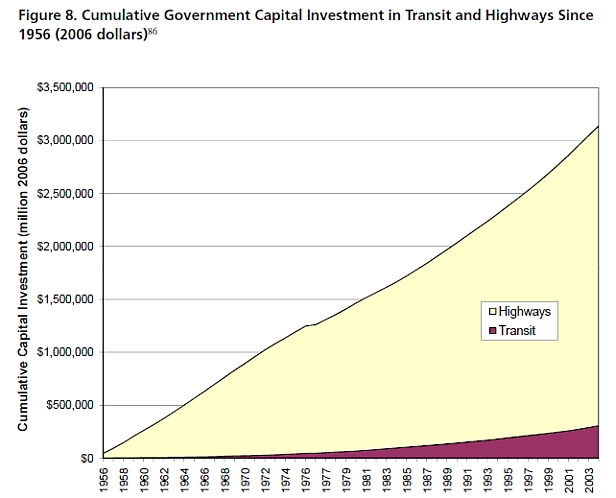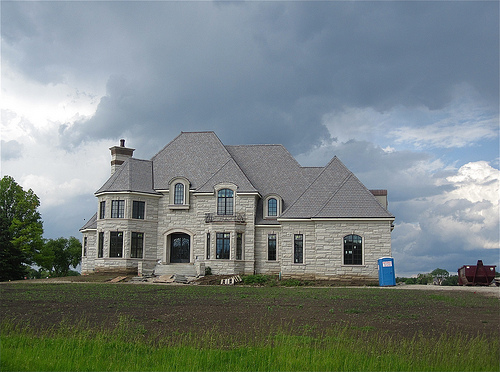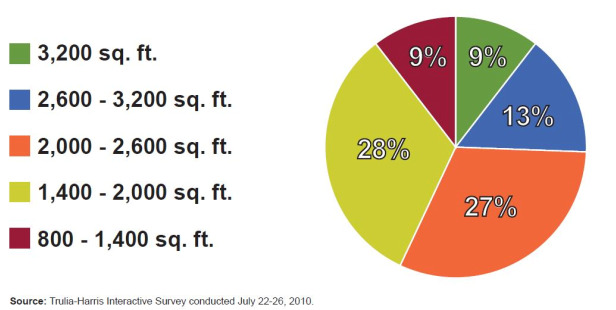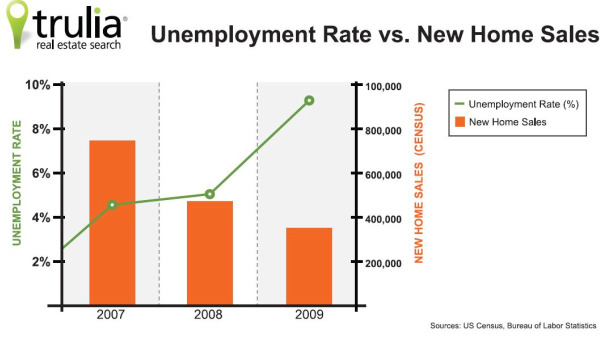Trulia just released some very compelling charts and graphs based off of recent opinion research suggesting it might be the end of the McMansion — the huge, mass-produced housing form associated with sprawl.
Their data, together with the drop in lot sizes for single family homes I wrote about last month, might point to a slackening in the demand for homes with lots of square footage. While this likely doesn’t mean a mass exodus of people from outer belts of sprawl into condominiums inside urban growth boundaries, it is a promising trend in tastes and economics that could be leveraged. Maybe now is the time to advance some policies to sustain this momentum. First, let’s check out the charts and graphs.
Here’s one that shows the evolution of American home preference from the 1950s to the present. House size exploded from an average of 983 square feet to more than twice that — 2,330 square feet today:
 Images: Trulia
Images: Trulia
But it appears from Trulia’s research that American’s are shifting their expectations about the size of their homes. This chart shows the American’s ideal home size now:
Less than 10 percent of Americans consider the McMansion — defined by Trulia as 3,200 square feet or larger — as being the ideal home size. Not all big houses are McMansions, however. Trulia is talking here about big houses, all built at once, and sprawling out. It’s the kind of housing form you’d expect in, say, Texas. But a story on CNBC had these two shocking paragraphs:
Diane Cheatham, owner of Urban Edge Developers in Dallas, said today, the average size of home they’re building is 2,200 square feet, down from 2,500 in 2005 — which was considered small for Dallas back then.
She said the trend there is more toward building green homes instead of big homes. Right now, they’re building a 1,200-square-foot uber-green home for a couple that’s downsizing from 3,000-square feet, Cheatham explained.
And here we were thinking everything was bigger in Texas. There isn’t any clear consensus about why this is happening, though it seems certain that the economy — and unemployment in particular — has a role:
But we know density and smaller homes are better than mega houses connected by vast networks of highways. What if we made the best of this situation by creating some policies to make it more economical to live inside urban growth boundaries? One idea is what I call the Urban Homesteader Tax Exemption. If you buy a home in certain in-city areas — perhaps the Pearl District in Portland or Belltown in Seattle — you’d get a significant federal tax credit like the now expired tax credit for first time home buyers. This would be a boon for older couples downsizing and a huge incentive for first time homebuyers. And it incentivizes what we know to be better — living in compact communities.
This post originally appeared at Sightline’s Daily Score blog.





